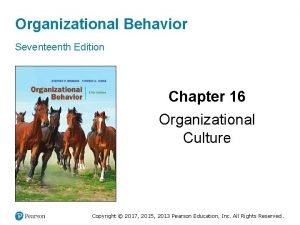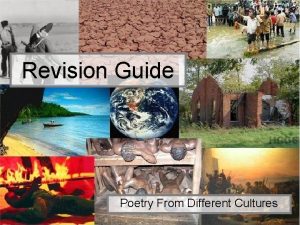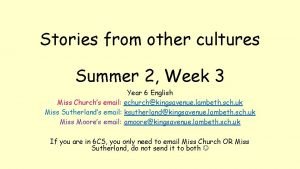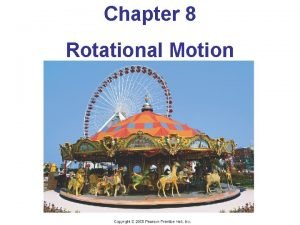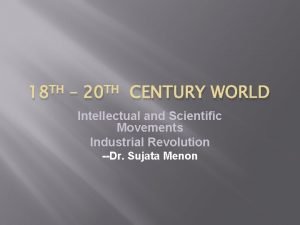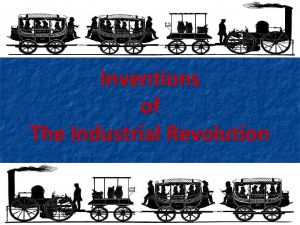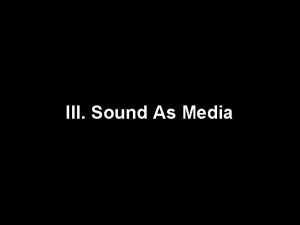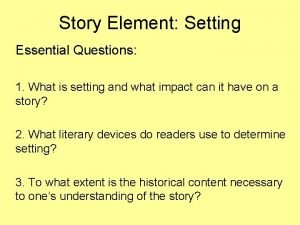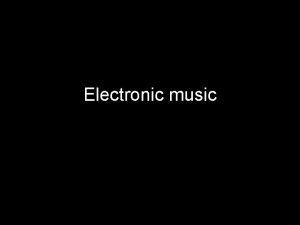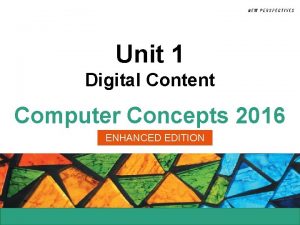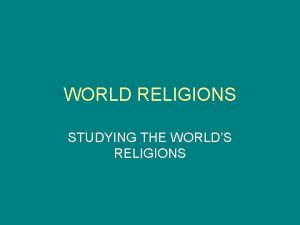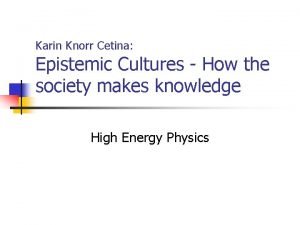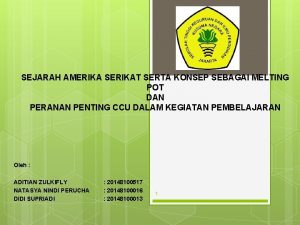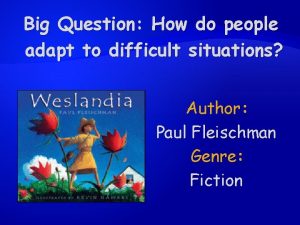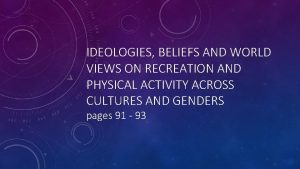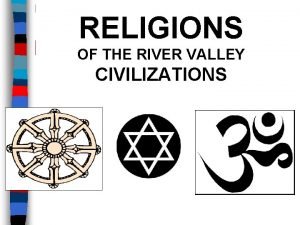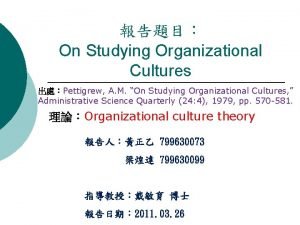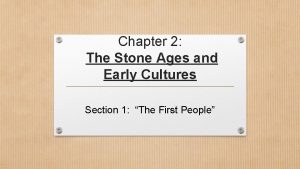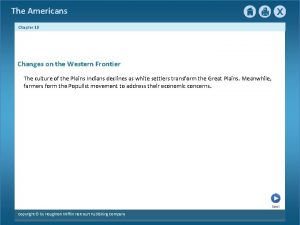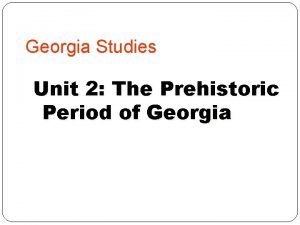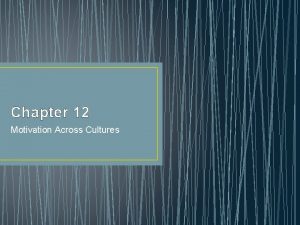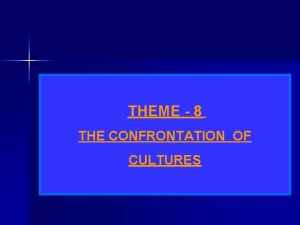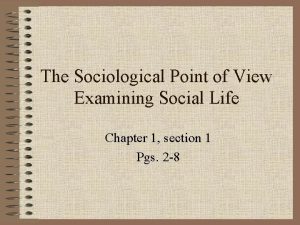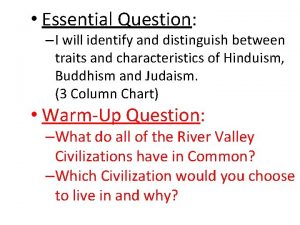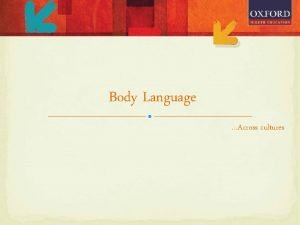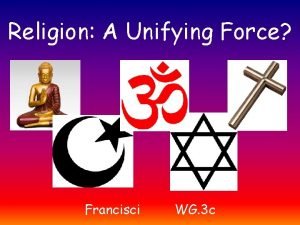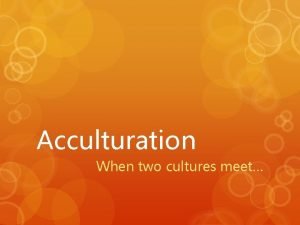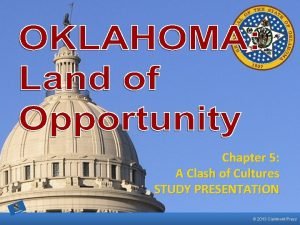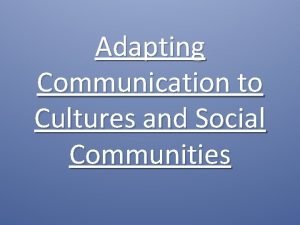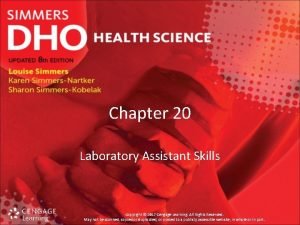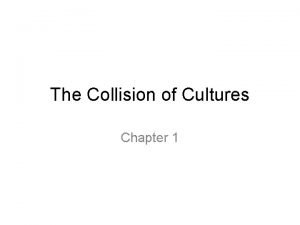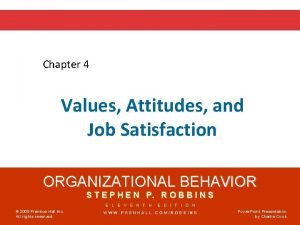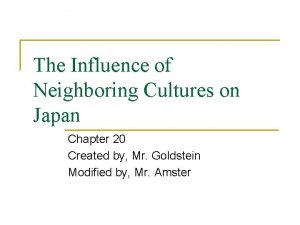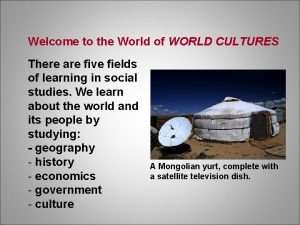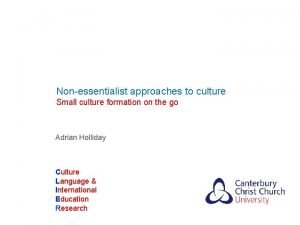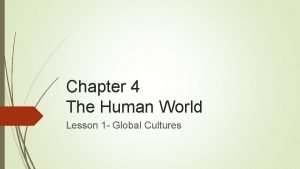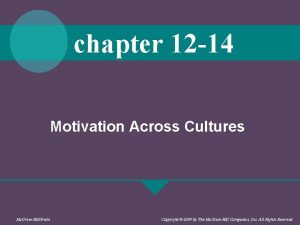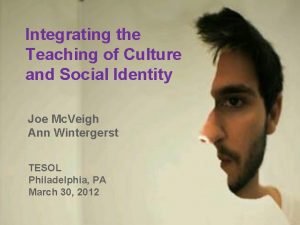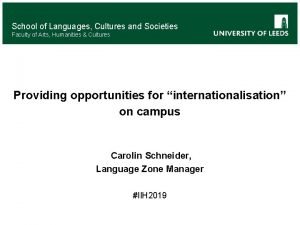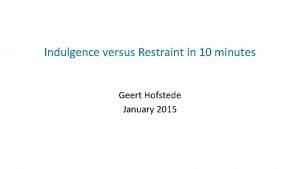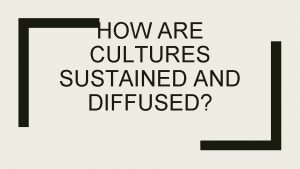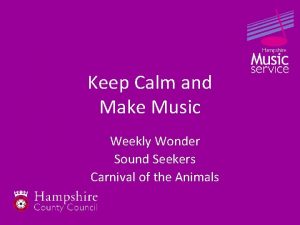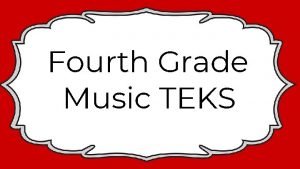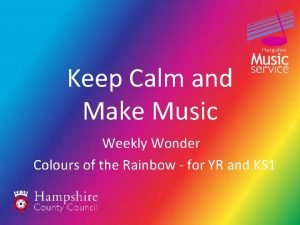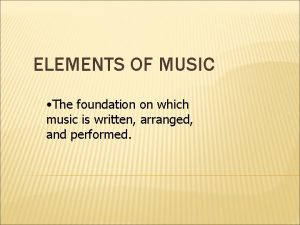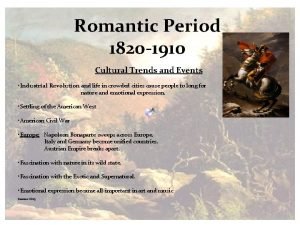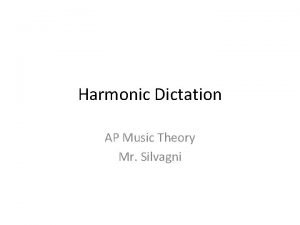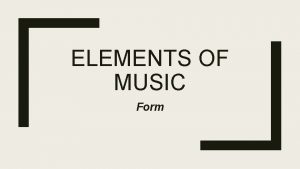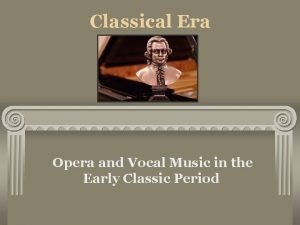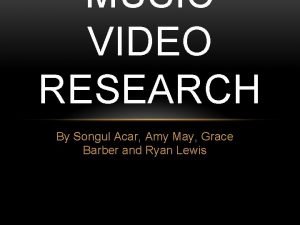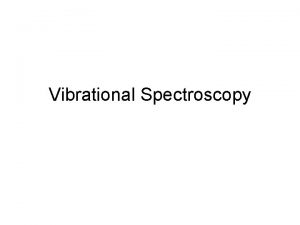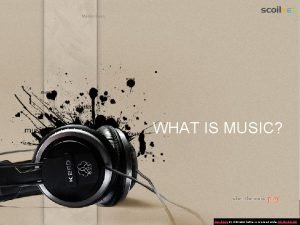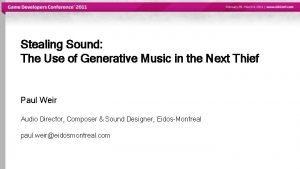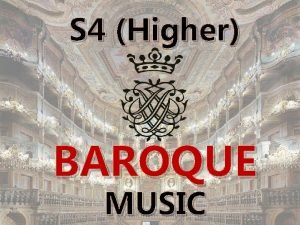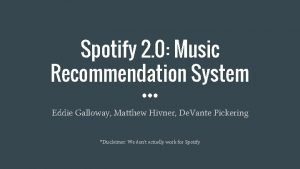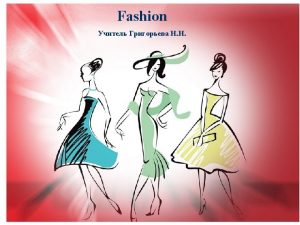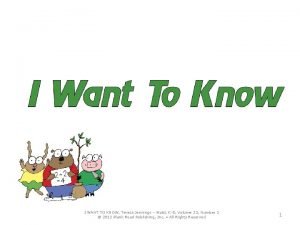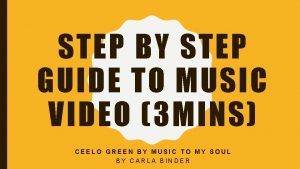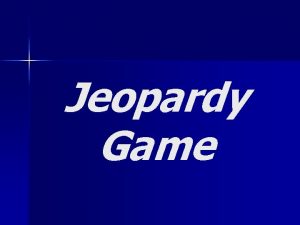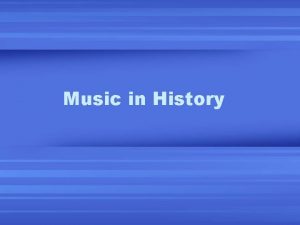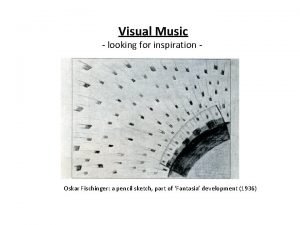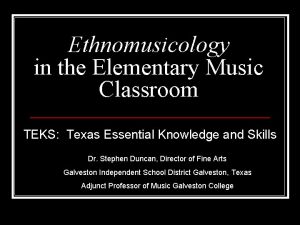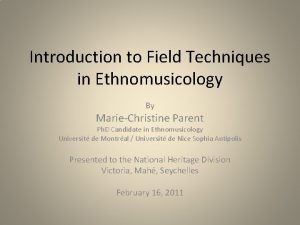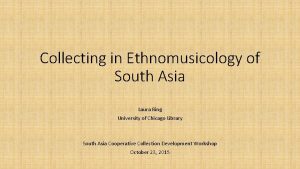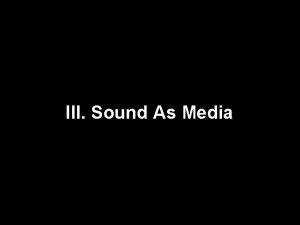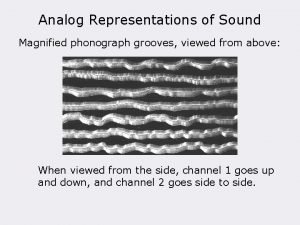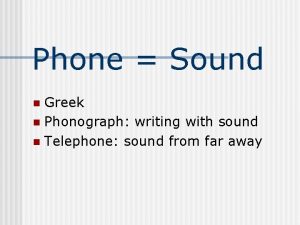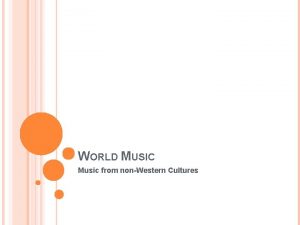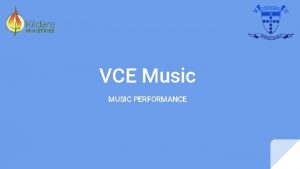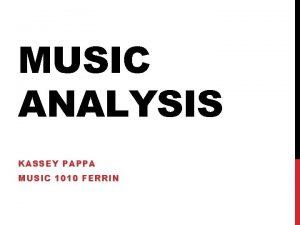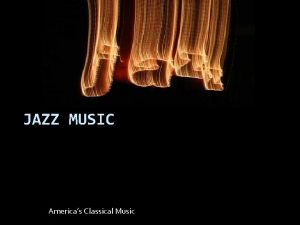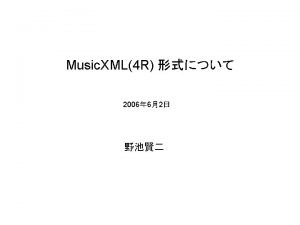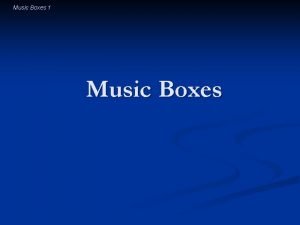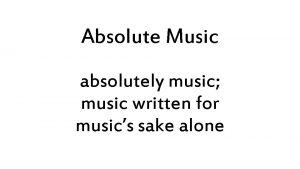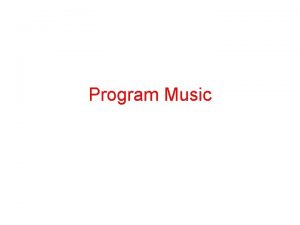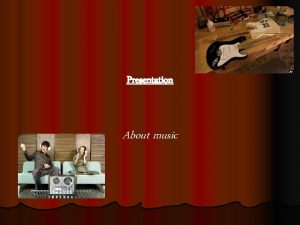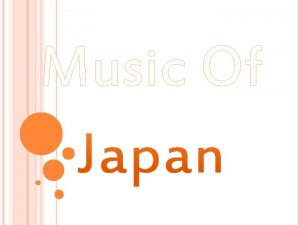Ethnomusicology Music from Other Cultures Phonograph n n























































































- Slides: 87

Ethnomusicology Music from Other Cultures

Phonograph n n n First device capable of recording and playing sound. Invented by Thomas Alva Edison in 1877. Made music from around the world easily accessible to everyone.

Phonograph Original tinfoil medium Phonograph, 1877

Phonograph Edison Home Phonograph, c. 1896

Phonograph Edison Standard Phonograph, c. 1898

Phonograph

Phonograph Edison Record Catalog, 1903

Phonograph Edison Record Catalog, 1911

n n Ethnomusicologist- a person who studies the music of many different cultures. Empathy- the ability to look at the world from another person’s perspective or “stand in someone else’s shoes. ”

Oriental & Occidental n n n Oriental- Asian or Eastern (China, Japan, Korea, Malaysia, etc. ). Occidental- Western European (UK, France, Germany, Spain, Scandinavia, etc. ). Descended from Roman Empire and immediate outlying “barbarian” tribes. Relatively unfamiliar cultural elements between hemispheres as these cultures developed in relative isolation from each other until the 1400 s.

Progression of Economies n Hunter/Gatherer- people obtain food by hunting (meat) and gathering (vegetables). Requires nomadic lifestyle as groups move from one food source to another. Simple housing and few material possessions. Dawn of man (c. 2 mya) to mesolithic (c. 10, 000 ya).

Progression of Economies n Pastoral- domestication of animals for food, clothing, and defense. Mesolithic (c. 10, 000 -3000 ya). Wealth measured in possession of livestock. Still nomadic, leading herds to good pasture and limiting possessions and housing.

Progression of Economies n Agricultural- Farming (c. 3500 ya to present). Development of agriculture depended on irrigation and a steady water supply (rivers), so the earliest civilizations developed along river valleys. The ability to feed a large population in place allowed increased possessions and better housing and required a military defense. Allows specialization of labor and trade.

Progression of Economies n n Industrial- c. 1800 to present. Economy based on mass production and trade of goods. Information/Technological? - present. Economy based on trade of information.

Music from Cameroon

Music from Cameroon

Music from Cameroon


Yaounde, Cameroon

Douala, Cameroon

Kribi Beach, Cameroon

Mandara Mountain Village

Waza Preserve

Bamileke Country “The Chutes” Waterfalls

Music from Cameroon Funeral Procession in the Atlantika Mountains

Lali Music of the Bamileke n n Warrior dance. Serves preparatory and celebratory purposes. Express bravery, virility, and brotherhood. Prohibited during colonial period as it represented a threat to European colonists.

Lali Perceptive Listening n n Identify means. How many musicians? What instruments or what kinds of instruments? All instruments belong to what family?

Music of Mexico

Music of Mexico n n n Large country with many regions and a variety of local cultures. Largely mountainous. Half of work force engaged in agriculture. Growing industrial and commercial sectors. Coastal areas have become a favorite tourist destination.

Major Cultural Influences 1. Native- The Aztec capital of Tenoctitlan was at present Mexico City. Many other native groups, some vassal states to the Aztecs, also occupied the area of present Mexico.

Major Cultural Influences 2. Spanish- Conquistadors under Hernan Cortes arrived in 1519, eventually conquered the Aztecs under Montezuma, and took their gold. Spanish colonization introduced a rich European musical heritage.

Major Cultural Influences 3. 4. African- The Spanish imported African slaves to work their colonial plantations. Caribbean- The culture of these islands, itself a combination of Spanish, African, and native elements, influenced Mexico through immigration and slave trade.

Mestizo n n Literally “mixture, ” in this case referring to culture. Cross fertizilation and blending of Spanish, Indian (native), and African cultures in Mexico.

Music of Mexico

Music of Mexico


Veracruz Fort San Juan de Ulua

Veracruz Zocalo Market Zocalo Square

Music of Veracruz n n 1. 2. Sones Jarochos- traditional songs of Veracruz. Typically performed on four instruments: Arpon- 35 - string harp, melody and bass. Requinto Jarocho- 4 -string guitar, melody.

Music of Veracruz n 3. 4. Sones Jarochos Instrumentation (continued): Jarana- thin guitar. Spanish Guitar- traditional 6 string.

Hear the Rhythm

Music of Mexico

Music of Mexico

Jalisco

Puerto Vallarta Beach

Puerto Vallarta Malecon Landmark Cathedral

Guadalajara Mariachi Ensemble Mariachi Festival Parade

Music of Jalisco n Mariachi- ensemble employed for a variety of styles. Instrumentation includes several violins, two trumpets, guitarron (bass guitar), vihuela (short 5 -string rhythm guitar), and Spanish Guitar (traditional 6 -string).

Music of Jalisco n n Son Jalisciense- literally “song from Jalisco. ” Cancion Ranchera- literally “country song. ”

La Negra n n One of the best known of the Sones Jalisciense. Example of polymeter, as accents among the six beat measure shift to arrange them in two groups of three then three groups of two.

La Negra

Music from China

Music from China

Music from China

Shanghai

Beijing (Peking)

The Forbidden City Beijing

The Forbidden City Beijing Golden Water Bridges

The Forbidden City Beijing Gate of the Celestial Guardians

The Forbidden City Beijing Five Dragon Pavilions

Temple of Heaven Double Ring Pavilion

The Great Wall

Peking (Beijing) Opera n n Origins uncertain. Dated from 600 to 6000 years ago. Chinese opera performed in a wide variety of regional and local styles. Combination of some of these styles in Peking from 17 th century. Combines orchestral music, singing, acrobatic martial arts, and pantomime.

Peking Opera Characters

Peking Opera Characters Lao Sheng Xiao Sheng Wu Sheng

The Story of White Snake

The Story of White Snake

The Story of White Snake

The Story of White Snake

The Story of White Snake

The Story of White Snake

Instruments Employed in Peking Opera n Jinghu- small, twostringed bowed lute, accompanies male roles.

Instruments Employed in Peking Opera n Jing Erhu- larger version of jinghu, accompanies female roles.

Instruments Employed in Peking Opera n Yueqinround plucked lute, accompanies male and female roles.

Instruments Employed in Peking Opera n Yangqinhammered dulcimer.

Instruments Employed in Peking Opera n Ruan- plucked lute.

Instruments Employed in Peking Opera n Pipa- pear-shaped lute.

Operatic Vocal Technique n n Western (European) Opera- lower range, voice resonates in chest. Peking Opera- generally higher range, voice resonates in head cavities, producing the characteristic “shrill tonal quality” (to Western listeners).

Chapter 2 Test Review 1. 2. 3. Which of Thomas Edison’s inventions was most beneficial to the music world? Ethnomusicologist. The ability to look at the world from another person’s perspective or to “stand in someone else’s shoes” is called _______.

Chapter 2 Test Review 4. 5. 6. 7. 8. Where is Cameroon? Lali. Mestizo. Sones Jarochos. Guitarron-

Chapter 2 Test Review 9. 10. 11. 12. 13. 14. 15. The Story of White Snake is a well -known ________. Briefly compare Western and Peking operatic vocal techniques. Hunter/Gatherer. Pastoral. Agricultural Industrial Information/Technological-

Chapter 2 Test Review 16. 17. Abraham measures his wealth in livestock. He is a member of a ______ society. Joseph measures his wealth in fine art and other possessions and lives in a permanent house. Although there artisans, craftsman, and trade, there is no large scale manufacturing. He is a member of an _____ society.

Chapter 2 Test Review 18. 19. Adam must hunt animals or gather vegetables to eat. He doesn’t farm, but is an expert on the forest, knowing just when certain foods are available in which parts of his territory. He is a ______. Henry’s society depends on large-scale manufacture of goods for trade, such as automobiles. He works in a factory. He lives in an

Chapter 2 Test Review 20. Billionaire Bill has earned his billions selling “ 1”s and “ 0”s arranged in very particular orders. He calls these packages “programs” or “applications” which control machines. He is a member of an ________ society.

Chapter 2 Test Review q 1. 2. 3. 4. Listening: Lali- warrior dance of the Bamileke. Cameroon. La Bamba- Son Jarochos. Veracruz. La Negra- Son Jaliscience. Jalisco. The Story of White Snake- Peking Opera. China.

Ethnomusicology Listening Test

Ethnomusicology Music from Other Cultures
 Organizational cultures often reflect national cultures
Organizational cultures often reflect national cultures Online music portfolio
Online music portfolio Poetry from other cultures
Poetry from other cultures Literacy shed zahra
Literacy shed zahra Rotational motion
Rotational motion Phonograph industrial revolution description
Phonograph industrial revolution description Who invented the phonograph in the industrial revolution
Who invented the phonograph in the industrial revolution Phonograph
Phonograph Essential questions for story elements
Essential questions for story elements Vocal music of the romantic period
Vocal music of the romantic period Elements of music in art appreciation
Elements of music in art appreciation What music that employs electronic music
What music that employs electronic music Instrument ilocano music
Instrument ilocano music This music is featured during sabbath and other holy days
This music is featured during sabbath and other holy days Is music speech and other sounds represented in binary
Is music speech and other sounds represented in binary Self-initiated other-repair examples
Self-initiated other-repair examples Which cultures believe in reincarnation
Which cultures believe in reincarnation Karin knorr cetina
Karin knorr cetina Why is america called a melting pot
Why is america called a melting pot Words from many cultures weslandia answers
Words from many cultures weslandia answers Recreational activities across cultures and genders
Recreational activities across cultures and genders Communicating across cultures ppt
Communicating across cultures ppt Slidetodoc.com
Slidetodoc.com On studying organizational cultures
On studying organizational cultures The stone ages and early cultures
The stone ages and early cultures Chapter 13 section 1 cultures clash on the prairie
Chapter 13 section 1 cultures clash on the prairie Georgia's prehistoric cultures chart
Georgia's prehistoric cultures chart Motivation across cultures
Motivation across cultures High-context cultures emphasize nonverbal messages.
High-context cultures emphasize nonverbal messages. What is culture
What is culture Confrontation of cultures
Confrontation of cultures What is sociology perspective
What is sociology perspective Isolation and preservation of pure culture
Isolation and preservation of pure culture Bacterial growth
Bacterial growth Ashtangika marga
Ashtangika marga Body language across cultures respuestas
Body language across cultures respuestas Which cultures believe in reincarnation
Which cultures believe in reincarnation What happens when different cultures meet
What happens when different cultures meet Cesar chavez adjectives
Cesar chavez adjectives Chapter 5 a clash of cultures
Chapter 5 a clash of cultures Social communities include a number of cultures
Social communities include a number of cultures Chapter 20:1 operating the microscope
Chapter 20:1 operating the microscope Individualistic culture vs. collectivist culture
Individualistic culture vs. collectivist culture The collision of cultures chapter 1
The collision of cultures chapter 1 Values attitudes and job satisfaction
Values attitudes and job satisfaction The influence of neighboring cultures on japan
The influence of neighboring cultures on japan Cultures of the mountains and the sea
Cultures of the mountains and the sea Postfigurative cultures
Postfigurative cultures How many cultures are there
How many cultures are there Small culture
Small culture Sub cultures
Sub cultures Motivation across cultures
Motivation across cultures Chapter 4 lesson 5 urban geography
Chapter 4 lesson 5 urban geography Atakapans
Atakapans Motivation in different cultures
Motivation in different cultures All cultures undergo
All cultures undergo Collectivistic cultures
Collectivistic cultures Judaism founder
Judaism founder School of languages cultures and societies
School of languages cultures and societies Popular culture examples
Popular culture examples Cultures and organizations software of the mind
Cultures and organizations software of the mind Indulgence restraint
Indulgence restraint How are local cultures sustained
How are local cultures sustained Taste different cultures
Taste different cultures Keep calm and make music
Keep calm and make music Music teks
Music teks A song with simile
A song with simile Sacred music in the middle ages
Sacred music in the middle ages Wonder colours
Wonder colours Tempo in music
Tempo in music 1820 to 1910
1820 to 1910 Harmonic retrogression
Harmonic retrogression Element of music form
Element of music form Opera & classical vocal music
Opera & classical vocal music Amy withause
Amy withause Selection rule for simple harmonic oscillator
Selection rule for simple harmonic oscillator Leen music
Leen music Music reflect
Music reflect Ritornello form
Ritornello form Music recommendation generator
Music recommendation generator Let me introduce myself music
Let me introduce myself music Music in the awakening
Music in the awakening Music k8
Music k8 Music video
Music video Tobyfox
Tobyfox Game over
Game over Oldest written music
Oldest written music Oskar fischinger
Oskar fischinger
